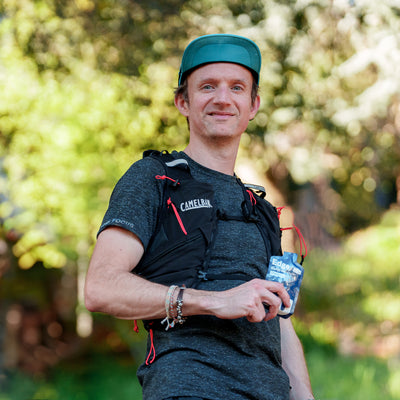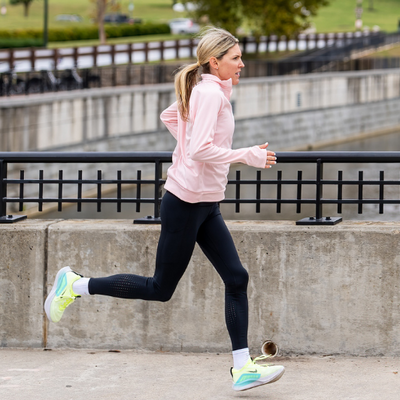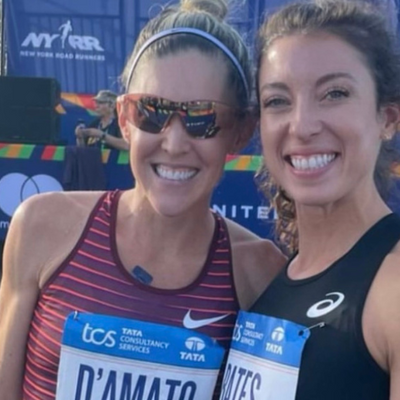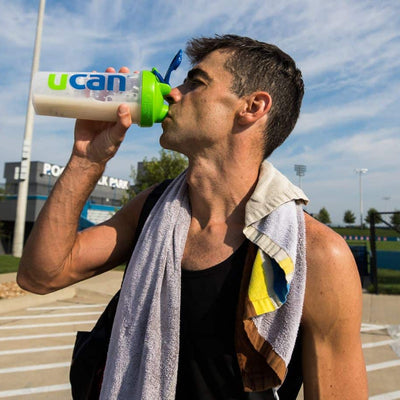By Matt Bach, 2014 Ironman Maryland Winner “I just can’t!” was what I said to myself when I ripped the tab off yet another gel at mile 12 of the marathon leg at Ironman Lake Placid 2013, my third Ironman. My stomach was already upset and just the thought of adding more sugar to it made me want to gag. I knew that if I didn’t take this gel, I’d be part of the death march in a half an hour, but I just couldn’t get myself to eat it. If any of this sounds familiar to you, you’ll be excited to learn that it doesn’t have to be this way. During my first four full Ironman events, I strove for 300 calories per hour (c/hr) of sugary sports drinks and gels and only managed about 230c/hr. I had major GI distress or bonking episodes during two of them, which made all my training worthless. At my next Ironman, I consumed just 94c/hr, had zero GI distress, and not a single bonking threat. The difference? Metabolic Efficiency Training and UCAN. I now have 99% confidence that nutrition won’t be what holds me back on race day. How many triathletes can say that?
 Three weeks later, I raced Ironman Maryland and won the race in 8 hours and 51 minutes, a 51-minute personal record, and did it on just 830 calories total. I’d be crazy to claim my breakthrough was all MET and UCAN. It wasn’t. There were a lot of things I changed in my training that made me a faster Ironman athlete, but what my nutrition strategy did was allow my fitness to express itself in my racing. After IMMD, UCAN was excited to hear of my success using the product and began sponsoring me as an athlete. I went on to be top amateur and 6th overall at Eagleman 70.3 the following June and then 72nd overall in Kona using MET and UCAN. Due to my belief in UCAN and a great 4-year relationship with the company, it seemed only natural that I come on board full-time to help grow the company’s presence in our world of Tri, and to help triathletes of all levels create their own stories of success.
Three weeks later, I raced Ironman Maryland and won the race in 8 hours and 51 minutes, a 51-minute personal record, and did it on just 830 calories total. I’d be crazy to claim my breakthrough was all MET and UCAN. It wasn’t. There were a lot of things I changed in my training that made me a faster Ironman athlete, but what my nutrition strategy did was allow my fitness to express itself in my racing. After IMMD, UCAN was excited to hear of my success using the product and began sponsoring me as an athlete. I went on to be top amateur and 6th overall at Eagleman 70.3 the following June and then 72nd overall in Kona using MET and UCAN. Due to my belief in UCAN and a great 4-year relationship with the company, it seemed only natural that I come on board full-time to help grow the company’s presence in our world of Tri, and to help triathletes of all levels create their own stories of success.
THE SWITCH TO BECOMING MORE METABOLICALLY EFFICIENT
From 2010 to 2014, I followed the conventional approach that everyone seemed to preach - “train your gut to absorb 2x your body weight worth of calories per hour.” In 2014, a friend of mine and sports nutritionist named Nicci Schock mentioned that there were people doing Ironman in under 100c/hr. I thought she had lost her marbles. I drilled Nicci with questions for two weeks trying to poke holes in the idea, but eventually decided to give it a shot. I took a metabolic efficiency test, which measures what percentage of fat and carbohydrate is used at various paces. At Ironman run target race pace, I was found to burn 60% carbohydrate and 40% fat. Then I worked with Nicci to make tweaks to my diet based on the Metabolic Efficiency Training (MET) guidelines she provided me. Along the way, Nicci suggested I try using UCAN because it paired well with her nutrition philosophy of steady energy through blood sugar stabilization. I felt different during a lot of my longer workouts, but I wanted to see it validated by the data. I tested again. This time, just 5 weeks later, I burned 40% carbohydrate and 60% fat at the same pace. That 20% decrease in carbohydrate usage helped preserve the limited carbohydrate stores we have in our bodies (max 2500 calories) and instead allowed me to draw more from my nearly unlimited fat stores (tens of thousands of calories in even the leanest athletes), which meant I didn’t have to eat as much while training or racing!THE RESULTS
 Three weeks later, I raced Ironman Maryland and won the race in 8 hours and 51 minutes, a 51-minute personal record, and did it on just 830 calories total. I’d be crazy to claim my breakthrough was all MET and UCAN. It wasn’t. There were a lot of things I changed in my training that made me a faster Ironman athlete, but what my nutrition strategy did was allow my fitness to express itself in my racing. After IMMD, UCAN was excited to hear of my success using the product and began sponsoring me as an athlete. I went on to be top amateur and 6th overall at Eagleman 70.3 the following June and then 72nd overall in Kona using MET and UCAN. Due to my belief in UCAN and a great 4-year relationship with the company, it seemed only natural that I come on board full-time to help grow the company’s presence in our world of Tri, and to help triathletes of all levels create their own stories of success.
Three weeks later, I raced Ironman Maryland and won the race in 8 hours and 51 minutes, a 51-minute personal record, and did it on just 830 calories total. I’d be crazy to claim my breakthrough was all MET and UCAN. It wasn’t. There were a lot of things I changed in my training that made me a faster Ironman athlete, but what my nutrition strategy did was allow my fitness to express itself in my racing. After IMMD, UCAN was excited to hear of my success using the product and began sponsoring me as an athlete. I went on to be top amateur and 6th overall at Eagleman 70.3 the following June and then 72nd overall in Kona using MET and UCAN. Due to my belief in UCAN and a great 4-year relationship with the company, it seemed only natural that I come on board full-time to help grow the company’s presence in our world of Tri, and to help triathletes of all levels create their own stories of success.








